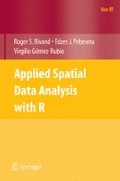Many disciplines have influenced the representation of spatial data, both in analogue and digital forms. Surveyors, navigators, and military and civil engineers refined the fundamental concepts of mathematical geography, established often centuries ago by some of the founders of science, for example by al-Khwārizmī. Digital representations came into being for practical reasons in computational geometry, in computer graphics and hardware-supported gaming, and in computer-assisted design and virtual reality. The use of spatial data as a business vehicle has been spurred in the early years of the present century by consumer broadband penetration and distributed server farms, with a prime example being Google Earth™. 1 There are often interactions between the graphics hardware required and the services offered, in particular for the fast rendering of scene views.
In addition, space and other airborne technologies have vastly increased the volumes and kinds of spatial data available. Remote sensing satellites continue to make great contributions to earth observation, with multi-spectral images supplementing visible wavelengths. The Shuttle Radar Topography Mission (SRTM) in February 2000 has provided elevation data for much of the earth. Other satellite-borne sensor technologies are now vital for timely storm warnings, amongst other things. These complement terrestrial networks monitoring, for example lightning strikes and the movement of precipitation systems by radar.
Access this chapter
Tax calculation will be finalised at checkout
Purchases are for personal use only
Preview
Unable to display preview. Download preview PDF.
Rights and permissions
Copyright information
© 2008 Springer Science+Business Media, LLC
About this chapter
Cite this chapter
(2008). Classes for Spatial Data in R. In: Applied Spatial Data Analysis with R. Use R!. Springer, New York, NY. https://doi.org/10.1007/978-0-387-78171-6_2
Download citation
DOI: https://doi.org/10.1007/978-0-387-78171-6_2
Publisher Name: Springer, New York, NY
Print ISBN: 978-0-387-78170-9
Online ISBN: 978-0-387-78171-6
eBook Packages: Mathematics and StatisticsMathematics and Statistics (R0)

